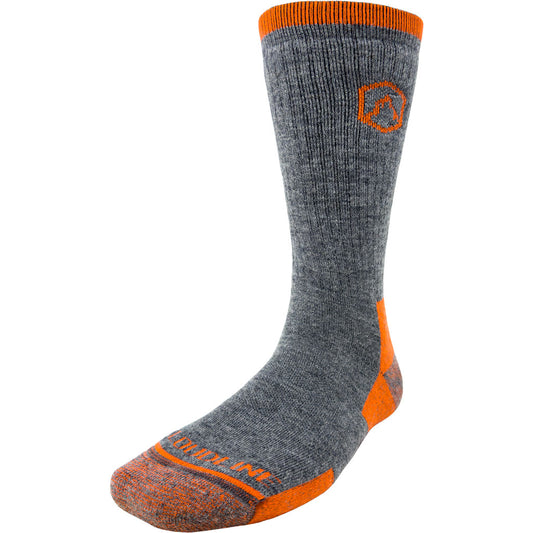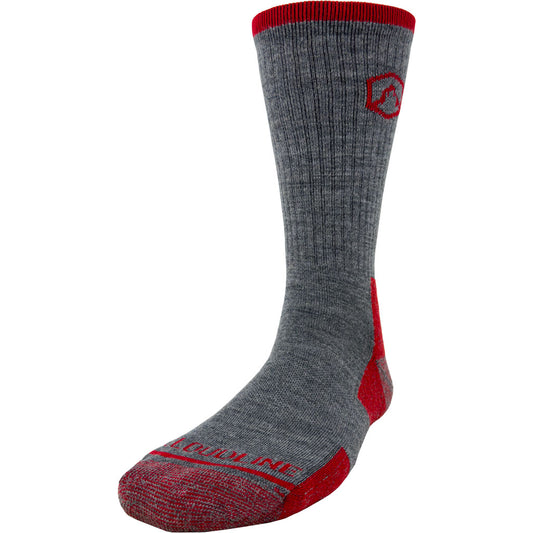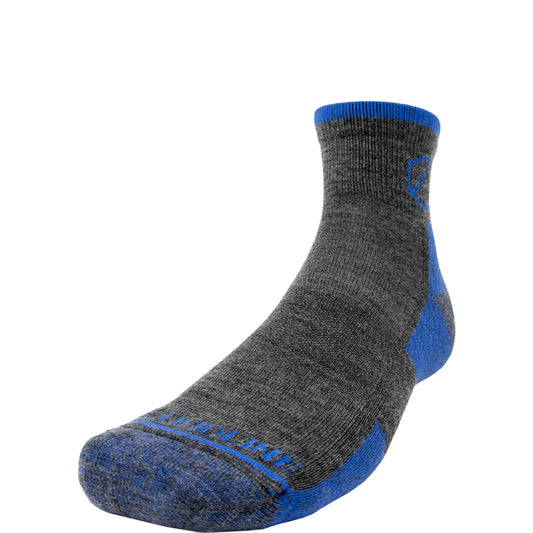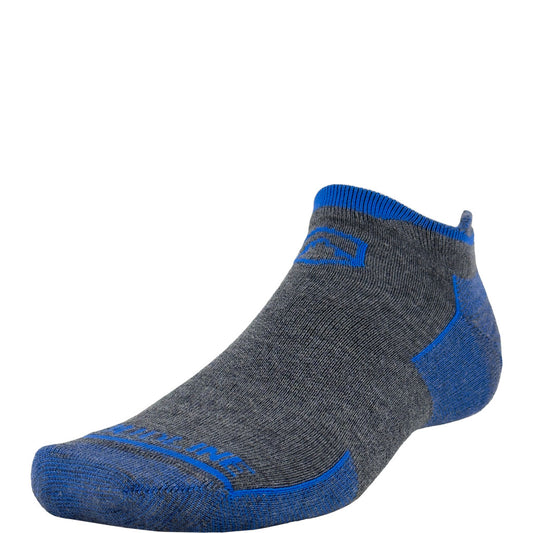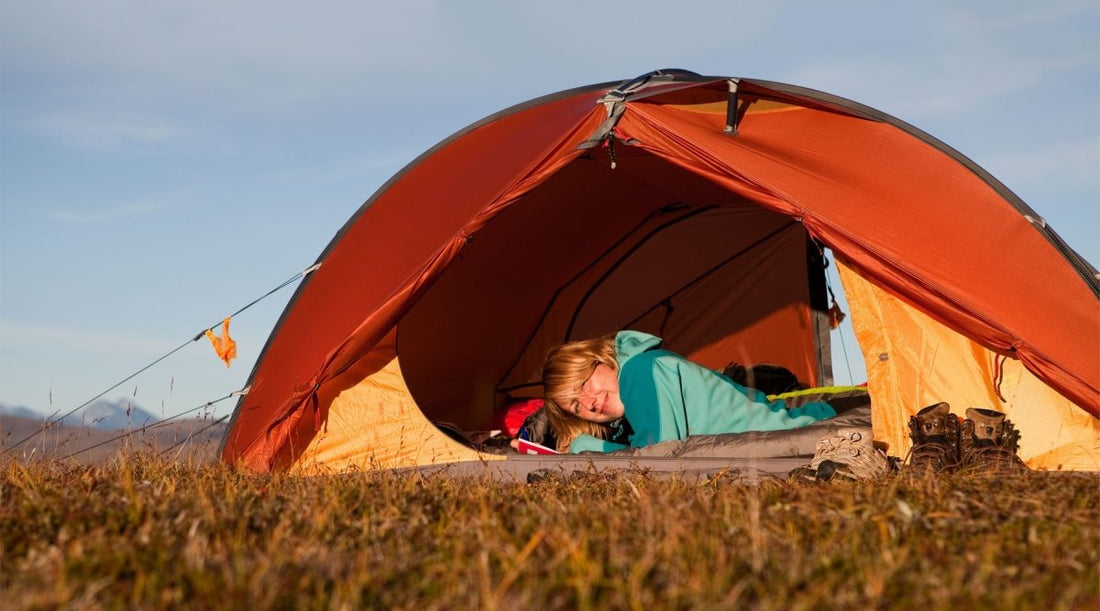
How to Sleep Great in the Great Outdoors
Rest is always important. Sleeping under the stars, without street lights and distractions, can be either a wonderfully grounding experience or a miserable, restless one. While it can give you a natural and restful evening when properly prepared, going into the night without planning and gear can result in a cold, wet, or just plain uncomfortable night out. When backpacking, sleepless nights translate into less miles and less ability to function well throughout the next days. When car camping, sleepless nights take away from the sheer enjoyment of getting out and disconnecting from daily stresses.
Most Americans are thought to have poor “sleep hygiene,” meaning that artificial light, screens, caffeine and other factors keep our natural sleep clocks- called “circadian rhythms”- off balance. Our bodies rest best when temperatures lower and lights go out, in flow with the seasons, sunrise and sunset. Spending even one night outside can improve your mental clarity and move you closer to a natural cycle of rest. Though sleeping outdoors does not typically allow for the comforts of home, following this simple guide will keep you safe and sleeping soundly through a night outside. Who knows- maybe your nights without walls will be some of your best nights of rest.
Sleeping Well Starts with a Well Setup Camp

Beginning your best night of sleep outside happens when you choose a place to set up camp. Following LNT principles, look for a spot that will keep you away from any dead branches overhead as well as block you from strong winds. Sleeping on exposed ridges, for example, will have sweeping views at the high cost of inclement weather and drafts. When you have the choice, move lower in elevation to a protected site.
Before laying down your footprint or tarp, consider the ground. Remove any rocks or sticks and try to position your shelter on an even section of earth.
When planning a trip, use resources like trail guides, Forest Service offices, REI’s Camping Project, Dyrt or freecampsites.net to see recent trip reports and reviews on places to set up for the night.
Do’s and Don’ts

Just like you might have a nightly routine at home, there are positive and negative pre-sleep practices for the outdoors. Check through these simple practices before hitting the hay.
During the day, focus on hydration. Hydration keeps your body temperature consistent and regulated and is crucial to sleeping properly. Paying attention to your water and calorie intake is always important, but even more so when hiking and sleeping outdoors.
Warmth is one of the primary factors for both safety and comfort when sleeping outside. When you first get your shelter set up, pull your sleeping bag out of its bag and allow it to loft. The insulation works best when it's filled with air, and allowing it time to loft will make sure that your first moments in bed are cozy.
Though it can be tempting to skip a last bathroom trip before bedding down for the night, emptying your bladder will help your body maintain a warmer temperature throughout the night.
Make sure that you eat something-preferably a warm dinner- close to the time you go to bed. If you eat dinner earlier, get some calories into your body before sleeping. Hot chocolate is a delicious and calorie-rich choice, giving your body more ammunition to fight the cold.
What feels like one of life’s most difficult decisions is deciding what is worth getting out of your bag or quilt for at night. It is key to keep a collection of layers within reach to curb mid-night needs, which are listed in the next section. With those things prepared, your only non-emergency reasons to get up at night will likely be a problem with your shelter or needing to go to the bathroom. In both cases, it is best to fix the problem as quickly as possible and get back into your bag or quilt. Spending time in bed, debating whether or not to set your shelter upright again or use the bathroom, will both spend body heat and allow the problem to continue putting your sleep at risk.
Lastly, know your body and sleeping temperature. Never, never go to bed cold in the outdoors. If you need extra warmth, Nalgene water bottles and thermoses can be filled with boiling water and placed in your bag or quilt. Bundle up and do jumping jacks or high-knees until you feel your body temperature rising again. Even in the shoulder seasons, I like to do both to help myself warm up and to give myself a head start on a great night of rest.
THE RIGHT GEAR FOR A GOOD NIGHTS SLEEP

Having the right gear is crucial for sleeping outside. You should be confident in your full sleep system, sleeping pad and sleeping bag or quilt for the specific trip and season you are planning. (Check out our articles on selecting and buying these camping staples on the blog.)
A sleep system includes all of the items and practices used to sleep in the outdoors. Many of these items, in any season, are articles of clothing. Keep in mind that your sleeping bag and quilt temperature ratings are based on the average male wearing base layer bottoms and tops, so build up from similar, breathable and warmth-regulating items.
Next to your bed, you will want to keep multiple warm layers in case you need them through the night. Depending on your personal needs, location and the season, keep more layers near your bed than you anticipate needing. Included in these should be a beanie, a rain jacket or shell to cover your feet for added warmth, gloves or mittens and core layers. Lastly, keeping special socks for sleeping only is best practice when camping and backpacking. These socks will ensure that you never have a wet or dirty layer on your feet when going to bed and can be kept in the bottom of your sleeping bag or foot box of your quilt.
Consider any accessories that could add to your comfort and warmth. If you are able and willing to pack a little more in your bag, consider an inflatable camp pillow or fixed pillow to stay in place. Both of these options add little bulk or weight to your bag and allow you to sleep more comfortably. Another great option to pack along for added comfort and warmth are sleeping bag liners and down blankets. A bag liner will act as an added layer of insulation within your bag or quilt, while a down blanket can go inside or outside of your bag or quilt. Both of these are great options and are worth considering as additions to your sleep system.
With proper planning and gear, sleeping in the outdoors can be equally energizing and restful. In these times, I genuinely hope you have the opportunity to safely escape and reset. Sleep tight!
Click here to view the products Cloudline offers!

